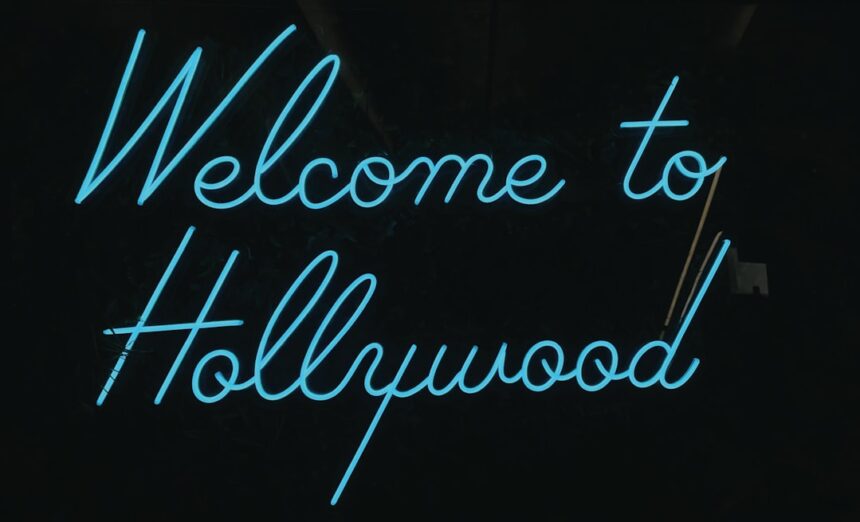Hollywood films have long been a source of entertainment, but beneath the glitzy surface lies a complex web of hidden truths that often go unnoticed by the average viewer. The allure of cinema captivates audiences, drawing them into fantastical worlds and compelling narratives. However, many films serve as more than mere escapism; they are vehicles for deeper messages, social commentary, and even political agendas.
As viewers become more discerning, the exploration of these hidden truths becomes increasingly relevant.
Hollywood has the power to shape perceptions, influence beliefs, and reflect cultural values. As such, it is essential to delve into the symbolism, metaphors, and underlying messages that filmmakers embed within their works. By doing so, audiences can uncover the multifaceted nature of storytelling in cinema and appreciate the artistry involved in crafting narratives that resonate on multiple levels.
This article aims to explore various aspects of hidden truths in Hollywood films, shedding light on the symbolism, subliminal messages, political influences, and more that contribute to the rich tapestry of modern filmmaking.
Key Takeaways
- Hollywood films often contain hidden truths and messages that go beyond the surface storyline.
- Symbolism and metaphors are frequently used in films to convey deeper meanings and themes.
- Subliminal messages and hidden meanings can be found in various elements of film, from dialogue to visual imagery.
- Politics and social issues often influence the content and messaging of Hollywood films.
- Conspiracy theories play a significant role in shaping the narratives and themes of many Hollywood films.
Symbolism and Metaphors in Film
Symbolism and metaphors are powerful tools in the hands of filmmakers, allowing them to convey complex ideas and emotions without overt exposition. Through carefully chosen imagery and narrative devices, directors can evoke feelings and provoke thought in ways that straightforward dialogue cannot achieve. For instance, a recurring motif such as a broken mirror may symbolize fractured identities or the duality of human nature.
Such symbols invite viewers to engage with the film on a deeper level, encouraging them to interpret meanings that may not be immediately apparent. Moreover, metaphors can serve as a commentary on societal issues or personal struggles. A film that features a character navigating a labyrinthine city may reflect the confusion and chaos of modern life.
By employing these artistic techniques, filmmakers can create layers of meaning that resonate with audiences long after the credits roll. This depth of storytelling not only enhances the cinematic experience but also invites viewers to reflect on their own lives and the world around them. As audiences become more attuned to these elements, they can appreciate the craftsmanship involved in creating films that transcend mere entertainment.
Subliminal Messages and Hidden Meanings

Subliminal messages have been a topic of fascination and controversy since the early days of cinema. These subtle cues, often embedded within the visual or auditory elements of a film, can influence viewers’ perceptions and emotions without their conscious awareness. For example, a fleeting image or a barely audible sound may evoke a specific feeling or association that shapes how an audience interprets a scene.
While some may dismiss these techniques as mere tricks of the trade, others argue that they play a significant role in shaping cultural narratives and societal norms. The presence of hidden meanings in films can also be seen as a reflection of the filmmakers’ intentions or beliefs. Directors may use subliminal messaging to challenge viewers’ assumptions or provoke critical thought about pressing issues.
For instance, a film that subtly critiques consumerism through visual metaphors may encourage audiences to question their own consumption habits. By recognizing these hidden layers, viewers can gain insight into the filmmakers’ perspectives and the broader cultural context in which the film was created.
The Influence of Politics and Social Issues in Film
| Movie Title | Political/Social Issue | Impact |
|---|---|---|
| Selma | Civil Rights Movement | Raised awareness and sparked discussions about racial inequality |
| An Inconvenient Truth | Climate Change | Increased public awareness and influenced environmental policies |
| Milk | LGBTQ+ Rights | Advocated for equality and acceptance of LGBTQ+ individuals |
| The Post | Freedom of the Press | Highlighted the importance of a free press in a democratic society |
Politics and social issues have always found their way into Hollywood films, often serving as a backdrop for character development and plot progression. Filmmakers frequently use their platforms to comment on contemporary issues, whether it be war, inequality, or environmental concerns. By weaving these themes into their narratives, they can raise awareness and spark conversations among audiences.
For instance, films that tackle racial injustice or gender inequality not only entertain but also educate viewers about systemic problems that persist in society. Moreover, the portrayal of political figures and events in film can shape public perception and influence political discourse. A biopic about a controversial leader may humanize them or vilify them depending on the narrative choices made by the filmmakers.
This power to shape narratives underscores the importance of critically analyzing films for their political implications. As audiences engage with these stories, they must consider how filmmakers’ perspectives align with or challenge their own beliefs about social justice and governance.
The Role of Conspiracy Theories in Hollywood Films
Conspiracy theories have long been a staple of Hollywood storytelling, captivating audiences with tales of intrigue and hidden agendas. Films that delve into conspiracies often tap into societal fears and anxieties about power structures and control. By presenting narratives that question official accounts or expose hidden truths, these films resonate with viewers who may feel disillusioned by mainstream narratives.
The allure of uncovering secrets adds an element of suspense and excitement to storytelling. However, the portrayal of conspiracy theories in film can also be problematic. While some films aim to provoke critical thought about real-world issues, others may perpetuate harmful myths or misinformation.
The line between entertainment and reality can blur, leading audiences to accept fictional narratives as truth. As such, it is crucial for viewers to approach these films with a discerning eye, recognizing the potential impact of conspiracy-laden narratives on public perception and belief systems.
The Power of Propaganda in Film

Propaganda has been utilized throughout history as a means of shaping public opinion and promoting specific ideologies. In Hollywood, filmmakers have occasionally employed propaganda techniques to advance political agendas or cultural narratives. Whether through overt messaging or subtle persuasion, films can serve as powerful tools for influencing societal beliefs and behaviors.
For instance, wartime films often glorify heroism and sacrifice while demonizing the enemy, reinforcing nationalistic sentiments among viewers. The effectiveness of propaganda in film lies in its ability to evoke emotional responses and create compelling narratives that resonate with audiences. By appealing to viewers’ values and beliefs, filmmakers can craft stories that align with specific agendas while simultaneously entertaining.
However, this raises ethical questions about the responsibility of filmmakers to present balanced perspectives versus promoting biased viewpoints. As audiences become more aware of these dynamics, they must critically evaluate the messages conveyed through cinematic storytelling.
Uncovering Hidden Agendas in Hollywood Films
Hidden agendas often lurk beneath the surface of Hollywood films, influencing narratives in ways that may not be immediately apparent to viewers. Filmmakers may have personal or political motivations that shape their storytelling choices, leading to biased portrayals or selective representations of events and characters. For example, a film that romanticizes a historical figure may gloss over controversial aspects of their life to create a more palatable narrative for audiences.
Uncovering these hidden agendas requires a critical lens through which viewers can analyze not only what is presented but also what is omitted from the narrative. By questioning the motivations behind storytelling choices, audiences can gain insight into how films reflect broader societal values and power dynamics. This process encourages viewers to engage with films not just as passive consumers but as active participants in interpreting meaning and understanding context.
The Impact of Corporate Interests on Film
Corporate interests play a significant role in shaping Hollywood productions, influencing everything from casting decisions to marketing strategies. Major studios often prioritize profitability over artistic integrity, leading to formulaic storytelling that caters to mainstream tastes rather than pushing creative boundaries. This commercial pressure can result in films that prioritize spectacle over substance, sacrificing meaningful narratives for box office success.
Moreover, corporate sponsorships and partnerships can further complicate the relationship between art and commerce in film. When brands collaborate with filmmakers to promote products within narratives, it raises questions about authenticity and artistic intent. Viewers may find themselves grappling with conflicting messages as they navigate between entertainment and advertising disguised as storytelling.
Recognizing these corporate influences is essential for understanding how financial motivations shape cinematic landscapes.
The Representation of Taboo Topics in Film
Hollywood has historically grappled with taboo topics—issues considered socially unacceptable or controversial—often reflecting societal attitudes toward these subjects. Films that tackle themes such as addiction, mental health, sexuality, or violence can challenge prevailing norms and spark important conversations about stigmatized issues. By bringing these topics into mainstream narratives, filmmakers have the potential to foster empathy and understanding among audiences.
However, the representation of taboo topics is not without its challenges. Filmmakers must navigate sensitive subject matter carefully to avoid perpetuating stereotypes or trivializing serious issues. The responsibility lies with creators to approach these themes thoughtfully while ensuring authenticity in their portrayals.
As audiences engage with films addressing taboo topics, they are encouraged to reflect on their own beliefs and biases while considering how media shapes perceptions of marginalized experiences.
The Manipulation of History and Facts in Hollywood Films
The manipulation of history is a common practice in Hollywood filmmaking, where creative liberties are often taken to enhance dramatic effect or appeal to audiences’ emotions. While historical dramas aim to depict real events or figures accurately, they frequently embellish details or alter timelines for narrative purposes. This raises ethical questions about the responsibility of filmmakers to present factual information versus crafting compelling stories.
The impact of this manipulation extends beyond entertainment; it shapes public understanding of history itself. When audiences consume films that distort historical facts or oversimplify complex events, they risk developing skewed perceptions of reality. As such, it becomes imperative for viewers to approach historical films with skepticism and seek out additional sources for context and accuracy.
By doing so, they can cultivate a more nuanced understanding of history while recognizing the artistic choices made by filmmakers.
The Importance of Critical Analysis in Understanding Hollywood Films
In conclusion, the exploration of hidden truths within Hollywood films reveals a rich tapestry of symbolism, subliminal messaging, political influences, and corporate interests that shape cinematic storytelling. As audiences become more aware of these dynamics, they are empowered to engage critically with the media they consume. Understanding the layers of meaning embedded within films enhances appreciation for the artistry involved while fostering informed discussions about societal issues.
Critical analysis serves as a vital tool for navigating the complexities of Hollywood filmmaking. By questioning narratives, recognizing hidden agendas, and examining representations of taboo topics or historical events, viewers can cultivate a deeper understanding of both cinema and society at large. In an era where media consumption is ubiquitous, fostering critical thinking skills is essential for discerning truth from fiction within the captivating world of Hollywood films.
In exploring the hidden truths in Hollywood films, it’s essential to consider the broader context of how narratives are crafted and the underlying messages they convey. A related article that delves into the intricacies of storytelling and the impact of cinematic narratives can be found on the In The War Room website. This piece provides a comprehensive analysis of the themes and motifs that often go unnoticed by the general audience but play a crucial role in shaping perceptions and ideologies. For a deeper understanding, you can read more about these insights by visiting the article on In The War Room.
CHECK THIS OUT! 📽️🎞️ Hollywood’s Secret War: How the CIA Rewrote Movies
FAQs
What are some common hidden truths in Hollywood films?
Some common hidden truths in Hollywood films include subliminal messages, hidden symbols, and allegorical references to real-life events or social issues.
How do filmmakers incorporate hidden truths into their films?
Filmmakers incorporate hidden truths into their films through subtle visual cues, dialogue, and symbolism. These elements are often woven into the narrative to convey deeper meanings or messages.
What are some examples of hidden truths in popular Hollywood films?
Examples of hidden truths in popular Hollywood films include allegorical references to political events, social commentary on issues such as racism or inequality, and subliminal messages intended to influence the audience’s perception.
Why do filmmakers include hidden truths in their films?
Filmmakers include hidden truths in their films to add layers of depth and meaning to their storytelling. These hidden elements can spark discussion and analysis among viewers, and provide a deeper understanding of the film’s themes and messages.
How can viewers identify hidden truths in Hollywood films?
Viewers can identify hidden truths in Hollywood films by paying close attention to visual details, recurring symbols, and subtle references within the narrative. Analyzing the film’s context and historical background can also help uncover hidden truths.




